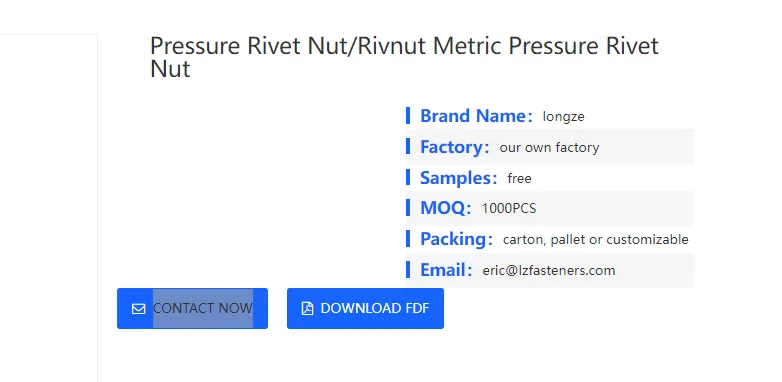

Different Categories of Fastening Devices and Their Applications
Nov . 09, 2024 05:39 Back to list
Different Categories of Fastening Devices and Their Applications
Understanding the Different Types of Fasteners
Fasteners are essential components that play a crucial role in various engineering and construction applications. They are used to join two or more objects together securely and are crucial in the assembly of structures, machines, and everyday products. While there is a vast array of fasteners available on the market, they can generally be classified into several primary categories based on their function, design, and application. This article aims to provide an overview of the most common types of fasteners.
1. Bolts and Nuts
Bolts are one of the most frequently used fasteners in construction and manufacturing. They consist of a cylindrical shaft with a head at one end and a threaded portion that allows a nut to be threaded onto it. Bolts are typically used to secure two or more components together. The nut, which is generally hexagonal, is tightened onto the bolt to create a strong joint. Such connections can be easily disassembled when necessary, which makes bolts a popular choice for applications requiring periodic maintenance or adjustment.
2. Screws
Screws are similar to bolts but are distinguished by their design. Unlike bolts, screws have a head that is often shaped for easy fastening with a screwdriver and a helical thread that allows them to be driven directly into the material. Screws are versatile and can be used in a wide range of materials, including wood, metal, and plastic. Some common types of screws include wood screws, sheet metal screws, and self-tapping screws, each designed for specific applications.
3. Rivets
Rivets are permanent fasteners used to join components together by creating a strong, secure bond. They have a cylindrical body with a head on one end. During installation, the rivet is placed through pre-drilled holes in the components and then deformed on the opposite side to create a second head. This process produces a strong, vibration-resistant joint that is commonly used in structural applications, such as bridges and aircraft manufacturing.
types of fastener

4. Clips and Clamps
Clips and clamps are fasteners designed for holding items together without the need for permanent fastening solutions. They are ideal for applications that require easy access for adjustments or replacements. Clip fasteners, such as spring clips, are often used in automotive and industrial applications, while clamps, such as C-clamps or hose clamps, are commonly used to secure pipes or tubing. These fasteners come in various sizes and designs to accommodate different applications.
5. Anchors
Anchors are specialized fasteners used to secure objects to concrete, masonry, or drywall. They provide a means of rigidly attaching items in situations where standard fasteners would struggle due to the material’s properties. Common types of anchors include expansion anchors, which expand against the sides of a hole when a screw is tightened, and adhesive anchors, which bond with the material using a strong adhesive. Anchors are extensively used in construction for mounting shelves, fixtures, and other items to walls or ceilings.
6. Fastener Materials
The material from which fasteners are made can significantly affect their performance and application. Common materials include steel, stainless steel, aluminum, bronze, and plastic. Steel fasteners are known for their strength and durability, making them ideal for heavy-duty applications. Stainless steel rust-resistant qualities make it ideal for outdoor or marine applications. Conversely, plastic fasteners are often used in electronic applications where corrosion resistance and lightweight properties are favored.
Conclusion
Fasteners are critical components in both everyday items and complex machinery or structures, and understanding the different types available is key to selecting the right fastener for each specific application. Whether you are constructing a building, assembling furniture, or working on industrial equipment, knowing the variety and appropriate use of fasteners can enhance both the efficiency and longevity of your projects. Always consider factors such as material, strength, and ease of disassembly when choosing a fastener, as these can significantly impact the performance of your assembly.
Latest news
-
Hot Dip Galvanized Bolts-About LongZe|High Strength, Corrosion Resistance
NewsJul.30,2025
-
High-Strength Hot Dip Galvanized Bolts - Hebei Longze | Corrosion Resistance, Customization
NewsJul.30,2025
-
Hot Dip Galvanized Bolts-Hebei Longze|Corrosion Resistance&High Strength
NewsJul.30,2025
-
High-Strength Hot-Dip Galvanized Bolts-Hebei Longze|Corrosion Resistance&High Strength
NewsJul.30,2025
-
Hot Dip Galvanized Bolts-Hebei Longze|Corrosion Resistance&High Strength
NewsJul.30,2025
-
Hot Dip Galvanized Bolts - Hebei Longze | Corrosion Resistance, High Strength
NewsJul.30,2025

